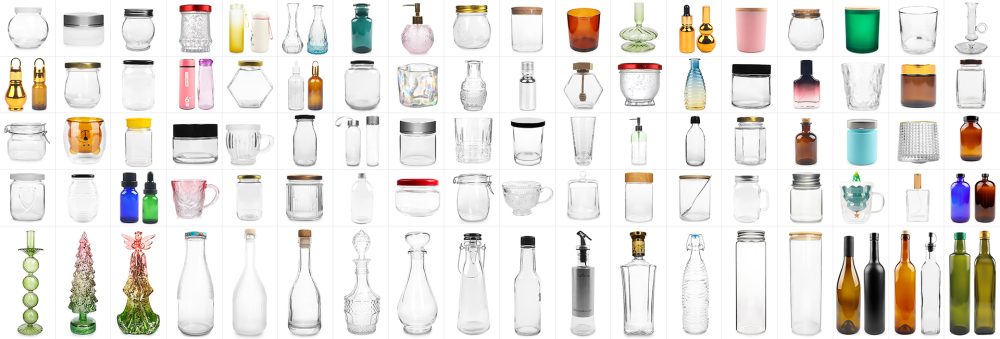| Table of contents |
1.Advantages of Borosilicate Glass2.Advantages of Heat-resistant Glass3.Application Scenes Comparison4.Comparative Analysis |
Glass products are ubiquitous in our lives, and both borosilicate glass and heat-resistant glass have attracted much attention due to their unique properties. The following will elaborately expound on their respective advantages, conduct a comparative analysis, and explain why borosilicate glass is superior.

Advantages of Borosilicate Glass
- High Heat Resistance
- Borosilicate glass can endure extremely high temperature changes without breaking. It has a high softening point and is more stable during heating compared to ordinary glass. For example, in a laboratory, when heating some chemical reagents, containers made of borosilicate glass can be directly placed on heating equipment without worrying about damage due to a sudden rise in temperature.
- Low Coefficient of Expansion
- This characteristic makes borosilicate glass have minimal dimensional changes when the temperature changes. Whether it is taken out of the refrigerator and immediately placed in hot water or undergoes repeated heating and cooling cycles, it can maintain good integrity. Drinking glasses made of borosilicate glass in households will not break due to expansion or contraction when alternating between hot and cold beverages.
- Strong Chemical Stability
- It has good tolerance to most chemical substances. In some chemical experiments or industrial production, when exposed to corrosive substances such as acids and alkalis, borosilicate glass can remain stable, without chemical reactions, ensuring the purity of the substances inside the container and prolonging the service life of the container.
Advantages of Heat-resistant Glass
- Heat Shock Resistance
- Heat-resistant glass can withstand a certain degree of rapid temperature changes. For example, during cooking, when a pot made of heat-resistant glass is taken directly from the stove and rinsed under cold water (within a short time), it generally will not break immediately, which can meet the basic heat resistance needs in daily cooking.
- High Transparency
- It has excellent optical properties, and the products made have excellent transparency. Some tableware made of heat-resistant glass, for example, has a beautiful appearance, and the state of the food inside can be clearly seen, increasing the aesthetic feeling and interest of dining.
Application Scenes Comparison
- Laboratory and Scientific Research
- Borosilicate glass is widely used in laboratories for various applications. It is used to make beakers, flasks, and test tubes due to its ability to withstand high temperatures and chemical corrosion. In experiments that involve heating and mixing different substances, borosilicate glass ensures accurate results and safety. Heat-resistant glass, on the other hand, is less commonly used in this context as it may not have the chemical resistance and high-temperature tolerance needed for complex scientific experiments.
- Culinary and Kitchenware
- In the kitchen, both types of glass have their uses. Heat-resistant glass is often used for baking dishes and some cookware that need to go from the oven to the table. However, when it comes to making coffee or tea, borosilicate glass is preferred. Its low expansion coefficient means it won’t crack easily from the temperature changes of hot water and cold air. Additionally, for storing food in the refrigerator and reheating in the microwave, borosilicate glass containers are more reliable as they can handle the temperature differences better.
- Industrial Manufacturing
- In industrial settings such as the production of electronics and optics, borosilicate glass is crucial for its purity and stability. It is used for making precision instrument components and optical lenses. Heat-resistant glass is not suitable for these applications due to its lower quality requirements and performance limitations in terms of stability and chemical resistance.
Comparative Analysis
- Comparison of Heat Resistance in Depth
- Although heat-resistant glass can withstand a certain amount of heat shock, borosilicate glass has a wider heat resistance range and a higher limit. In an industrial high-temperature environment, such as manufacturing observation windows for high-temperature instruments, borosilicate glass can withstand hundreds or even thousands of degrees Celsius for a long time, while heat-resistant glass may deform or break under such high-temperature conditions. For example, at the observation port of some high-temperature kilns, borosilicate glass can ensure clear observation of the internal situation and the glass remains intact, while heat-resistant glass is not capable.
- Differences in Chemical Stability
- When in contact with chemical reagents, the chemical stability of borosilicate glass is far superior to that of heat-resistant glass. In the pharmaceutical industry, when it is necessary to store and transport some chemical agents, borosilicate glass containers can ensure that the agents are not affected by the glass material and guarantee the quality of the drugs. However, after being in contact with certain special chemical substances for a period of time, heat-resistant glass may experience surface erosion and other phenomena, affecting the performance of the container and the safety of the substances contained.
- Comparison of Long-term Use Performance
- From the perspective of long-term use, due to its characteristics such as a low coefficient of expansion, the performance of borosilicate glass hardly declines during repeated use. After experiencing multiple heat shocks, heat-resistant glass may gradually develop small cracks and other damages, reducing its service life and safety. For example, a heat-resistant glass kettle used in the household for a long time may develop some inconspicuous small cracks on the kettle body after a period, while a borosilicate glass kettle can maintain a good state.
In conclusion, borosilicate glass exhibits more excellent characteristics in terms of heat resistance, chemical stability, and long-term use performance. This gives it greater advantages compared to heat-resistant glass in many fields and can better meet the application scenarios with high requirements for glass performance.
Contact us to get the glass products you want







